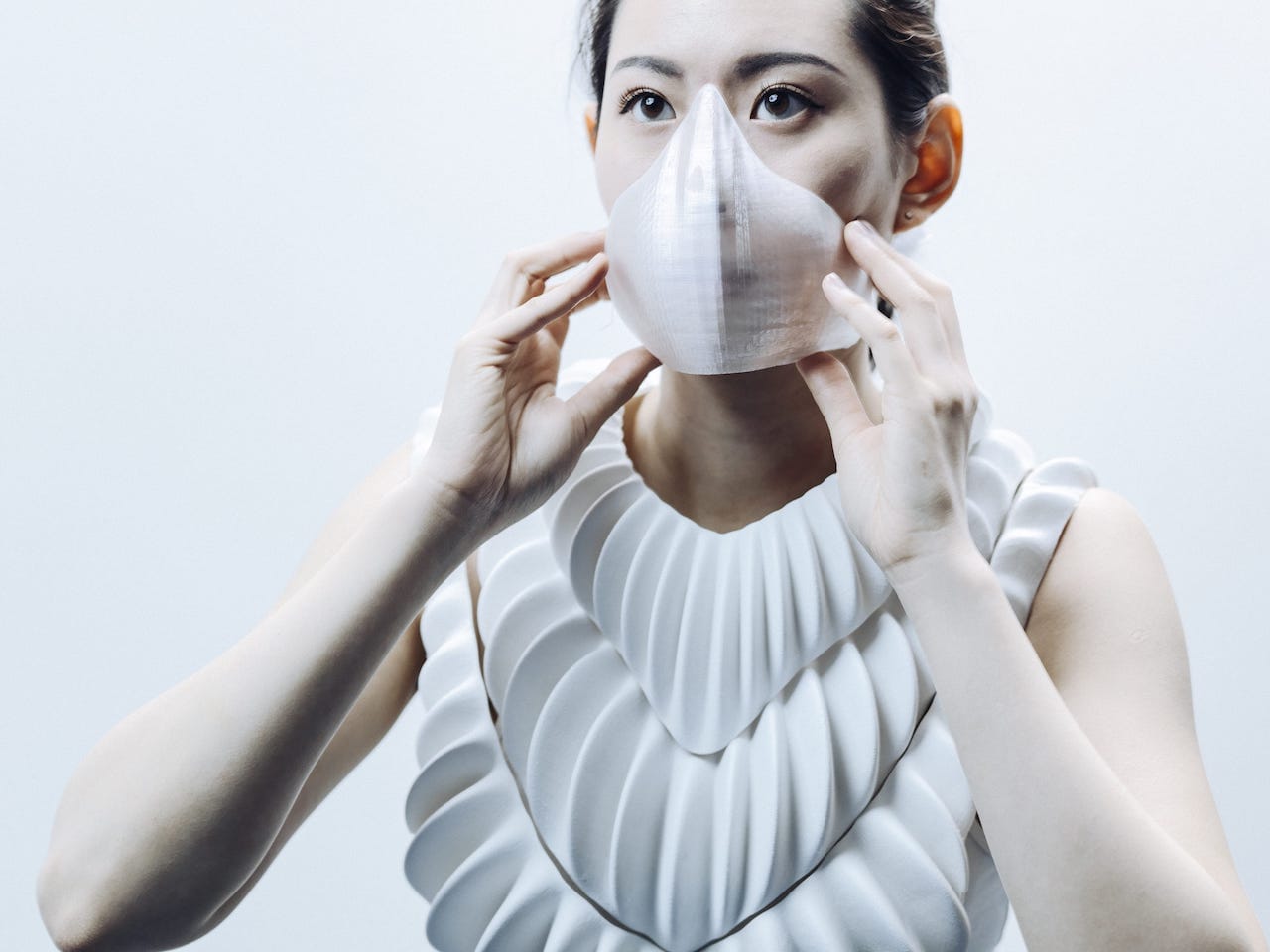![AMPHIBIO by Jun Kamei [Source: Mikito Tateisi]](https://fabbaloo.com/wp-content/uploads/2020/05/image-asset_img_5eb0a1fe1aef0.jpg)
This week’s selection is the intriguing AMPHIBIO device by designer Jun Kamei.
This is a very curious 3D printed item, and I am not sure if it is serious, satirical or experimental. Or all of the above. Kamei’s tagline for the the work is “A gill garment for our aquatic future”.
Wut?
![The 3D printed visual prototype of AMPHIBIO [Source: Fabbaloo]](https://fabbaloo.com/wp-content/uploads/2020/05/image-asset_img_5eb0a1fea08b9.jpg)
Kamei is correct: climate change is warming our planet and it is expected that sea levels will rise precipitously by the end of the century, likely flooding a good percentage of humanity’s homes. But will we actually be living IN the water and need gills?
![Detail of the physical prototype of the AMPHIBIO [Source: Fabbaloo]](https://fabbaloo.com/wp-content/uploads/2020/05/image-asset_img_5eb0a1ff1630f.jpg)
Kamei explains the idea behind AMPHIBIO in a bit more detail:
“AMPHIBIO is a 3D printed amphibious garment which function as a gill. Designed for a future where humankind lives in very close proximity with water, it provides daily comfort to people who spend as much time in the water as on the land.”
Hm. Does this item actually work? In this video, it seems to produce a small increase in oxygen levels:
How can this work? Again, Kamei explains in a mysterious manner:
“AMPHIBIO is made out of a special material which supports underwater breathing by replenishing oxygen from the surrounding water and dissipating carbon dioxide which accumulate in the system, inspired from the gill of water diving insects. The material can be shaped in complex form using 3D printing. Patent pending.”
![Testing the oxygen generated by AMPHIBIO [Source: Jun Kamei]](https://fabbaloo.com/wp-content/uploads/2020/05/image-asset_img_5eb0a1ff5c4db.jpg)
And:
“The technology was inspired from water diving insects which survive underwater by virtue of a thin layer of air trapped on their superhydrophobic skin surface, working as a gas exchanging gill. The newly developed material can be shaped in complex form using the recent additive manufacturing technology such as 3D printing.”
Aha, so this could actually work. It turns out that Kamei, who is also a materials scientist as well as a designer, intends on bringing this technology to human use with a larger version. Evidently a 32sm surface area is required to extract sufficient oxygen for normal human breathing.
![AMPHIBIO 3D printed gill concept [Source: Jun Kamei]](https://fabbaloo.com/wp-content/uploads/2020/05/image-asset_img_5eb0a1ffa7142.jpg)
While AMPHIBIO is a curious, but entirely wearable unit today, I’m not sure underwater explorers would appreciate the drag from 32sm of material trailing behind them. But perhaps there is an interesting way to fold the large area into a smaller package. Kamei says that the technology falls between free diving and full scuba, where it will permit longer underwater stays with less equipment.
![Comparison of AMPHIBIO concept vs other underwater approaches [Source: Jun Kamei]](https://fabbaloo.com/wp-content/uploads/2020/05/image-asset_img_5eb0a1ffeaf9b.jpg)
At first glance, this concept may seem a bit silly, but I think there is a very serious component to it. Sea levels will absolutely rise in the decades, and coastal cities at low elevations may have to be partially or completely evacuated.
![Diving in abandoned future cities with 3D printed gills [Source: Kathryn Strudwick]](https://fabbaloo.com/wp-content/uploads/2020/05/image-asset_img_5eb0a20127f02.jpg)
We will be left with abandoned cities with buildings inundated with sea water. While no one will likely live in such structures, they could become a popular spot for aquatic explorations – and the AMPHIBIO or similar technology might be exactly what is required.
Meanwhile, keep those carbon dioxides down, will you?
Via Jun Kamei











This week’s selection is a 3D printed Coronavirus!